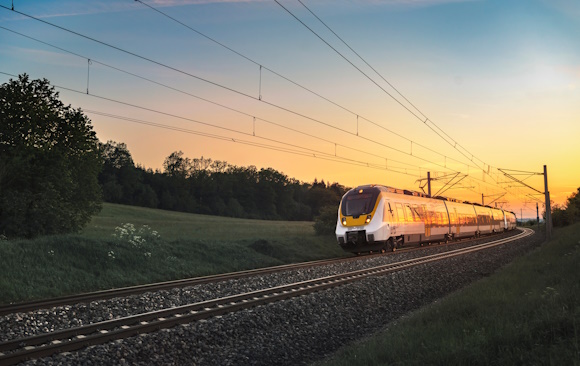How do you maintain infrastructure while train operations are running?
Finding the optimum balance between maintaining infrastructure and making it available to train operating companies can be a challenge. You want to make infrastructure available to train operating companies (TOCs) 24/7. Yet you need to maintain the infrastructure so it’s safe, reliable and cost-effective. This can’t be done simultaneously.
Possession time management is a means to ensure that maintenance is performed when the infrastructure is least used. Many infrastructure managers and contractors rely on outdated methods involving spreadsheets, or even sheets of paper. Many hours spent in meeting rooms may result in a feasible plan that depends as much on guesswork as rational analysis. There is simply too much information as well as countless factors to consider. As leading infrastructure companies have discovered, there is a better way to handle possession time. You need to consider all the factors and their impact on the network as well as your own costs. Rethinking your approach to possession time will result in major improvements to your result.
Optimize network rail possession management
In this article, you will discover how automated scenario testing is improving quality, safety and service levels while reducing costs in rail infrastructure maintenance. The process of coordinating and controlling the temporary closure of a section of a railway track to allow for maintenance, construction, or inspection activities. The goal is to maximize the time available for work while minimizing disruption to train services, which requires extensive planning and scheduling.
Take in account these scenarios
The challenge: You have scheduled maintenance for switches and crossings.
Input factors
To execute the maintenance, you must consider:
• Labor and machinery costs
• Potential financial penalties
• The type of maintenance needed
• Possible detours
• Labor rules and regulations
• The effects on train operations
• The impact on the timetable
As the end of your possession time approaches, what happens if a job isn’t finished? Do you communicate the delay to the TOC? Or do you hire extra people to try and finish the job on time? Will they be able to complete it within the given time or will they have to rush the job, with potentially disastrous consequences?
Output
Obviously, you’ll want to pick a plan that minimizes costs. But you also need to ensure your plan results in minimal disruptions to normal train services. And you’ll want to hand the track back at full speed, rather than with a safety speed limit in place.
Assessing the impact of different maintenance regimes
What if you could compare different maintenance regimes in advance to evaluate their outcomes? Suppose you could assess the outcome of longer possession times, or consider different approaches to the maintenance itself?
| Train-free possession time | Pros | Cons |
| You have possession when trains aren’t running, from 1 A.M. to 5 A.M. | Less disruption: TOCs can run trains more or less according to timetable | The work could easily need one or two more shifts to complete, with different welders completing and checking welds. |
| You use up one hour with the safety briefing. | Train operating companies and their customers are happy. | You cannot return the track at full speed. |
| You allocate a second hour at the end of the possession to clear up after the actual work. That leaves you with just two hours for your maintenance crew to do the work. | Rail freight operators are not happy since they have to use the deviation route three times | |
| Labor and machine costs have increased because you needed several days to complete the task. | Labor and machine costs have increased because you needed several days to complete the task. |
What happens when you have a longer possession time than anticipated?
| Longer Possession Time | Pros | Cons |
| What if you went for a longer possession, extending the train-free time from 11 P.M. to 7 A.M.? | Your access fees have gone down. | You have to cover the TOCs’ costs for hiring replacement buses. |
| You can finish using high-output machines in one shift, which saves money and frees them up for another job tomorrow night. | Your labor and machinery costs have decreased. | TOCs and their customers are not happy with the longer period of track unavailability. |
The same welder can finish the entire job, so there won’t be any need for a handover briefing. | You can return the track at full speed. | |
| You need fewer shifts, which saves you money. | Rail freight operators are happy, since they only have to use the deviation route once instead of three times. |
Until now, testing what-if scenarios to evaluate the potential gains or losses was impossibly time consuming and labor intensive. But with automated scenario planning, you can evaluate all your options in just a couple of hours and see how each scenario would affect your key performance indicators (KPIs). Having the ability to weigh the costs and benefits of each option gives you the competitive edge.
| Different maintenance types | Pros | Cons |
| Replacing a switch | You only have to do it once a year, minimizing disruption to the TOCs. | Switch replacement is costly. |
| Regular inspection and repair. | Lower capital costs. Disruption to the TOCs. | More disruptions occur as fortnightly inspection is needed. |
| The switch is close to an existing maintenance project. | It can be done by personnel who are already on-site. | It might disrupt other ongoing projects. |
| The switch is geographically isolated on the network | Total travel time for crew might be greater than the actual work time. |
Scenario planning that supports decision making

The key trade-off is always between more effective use of resources (people, machines and materials) and the extra costs you incur by causing additional disruption. The optimal solution is not always obvious. Longer possession time would mean paying compensation to TOCs. However, if this longer possession time allowed a faster return to full-speed runs, that would be a better outcome than reduced-speed runs over several days.
As well as showing you the effects of your decisions on your KPIs, scenario planning allows you to also give more weight to certain KPIs. For example, you could give greater importance to those measuring financial performance or resource use. You can build in your business rules, such as maximum working hours and minimum rest times, to ensure all generated plans are feasible, profitable and comply with regulations.
Dramatic improvements with scenario planning
With scenario planning built into your approach to planning possession time, expect to see a reduction of:
• Restriction hours
• Delay risk
• Machinery energy use
• Night-time noise
• Shifts
Imagine being able to report these results as part of your maintenance and renewal operations.
Save money with optimized use of resources
With smarter and more integrated thinking about possession time, you can do more than just save money. If you have a great solution for maintenance planning, you can balance the competing needs of all stakeholders. You will also optimize the use of fixed network capacity as well as access to your maintenance crews and resources.
All these happen when scenario planning is used to:
1. Assess how the different planning options affect your KPIs, such as safety, employee satisfaction,
customer service and profitability.
2. Identify the optimal trade-off between the best use of your resources and disruptions to rail service.
3. Combine the maintenance of track, ancillary equipment and overhead lines into cost-effective clusters.
Additional resources
To discover the significant difference our DELMIA solutions will make to your infrastructure management, check out these resources:
DELMIA Quintiq Rail Service, Fleet, & Crew Planning
DELMIA Quintiq Production Planning

